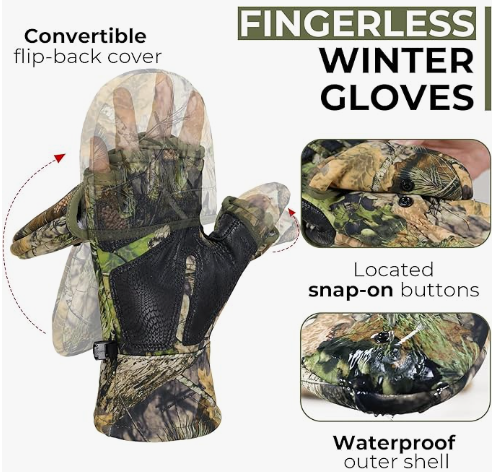Choosing the right ski gloves is key for a comfortable and safe experience on the slopes. The best ski gloves combine insulation, waterproofing, breathability, dexterity, and durability. Here’s a simple guide to understanding the essential features to look for in ski gloves.
1. Insulation
Insulation is crucial for keeping hands warm in cold conditions. Common insulation types include:
- Synthetic Insulation: Materials like Thinsulate are lightweight and provide warmth without bulk.
- Down Insulation: Down is warmer but may lose its insulating properties if it gets wet.
Insulation Comparison Table
| Insulation Type | Warmth | Bulk | Best For |
|---|---|---|---|
| Synthetic | High | Low | All conditions, quick-drying |
| Down | Very High | High | Extremely cold, dry climates |
2. Waterproofing and Breathability
Ski gloves need to keep moisture out while allowing sweat to escape.
- Waterproof Membranes: Materials like GORE-TEX are known for providing waterproofing and breathability, ideal for intense activities in wet conditions.
- DWR Coatings: Durable Water Repellent coatings improve water resistance on the glove’s outer layer.
3. Dexterity and Fit
A good fit improves dexterity, making it easier to grip poles and adjust equipment. Look for:
- Pre-Curved Fingers: Designed to mimic the natural shape of the hand, improving comfort.
- Adjustable Cuffs: Allow a secure fit and keep snow from entering the glove.
4. Durability
Durable gloves are essential for frequent skiers, as they withstand wear from skis, poles, and falls.
- Reinforced Palms and Fingers: Often made with leather or synthetic materials, these areas resist abrasion and extend the glove’s lifespan.
- Double Stitching: Strong stitching enhances seam durability.
Durability Features Table
| Feature | Benefit |
|---|---|
| Reinforced Palms | Protects high-wear areas |
| Double Stitching | Adds seam strength |
5. Additional Features
Modern ski gloves come with added features that improve convenience and comfort.
- Touchscreen Compatibility: Allows you to use devices without removing gloves.
- Wrist Leashes: Prevent gloves from getting lost when taken off.
- Nose Wipes: Soft patches on the thumb for easy wiping.
Design Choices: Gauntlet vs. Under-Cuff
- Gauntlet Style: Extends over the jacket sleeve, adding extra protection against snow.
- Under-Cuff Style: Fits under the jacket sleeve for a sleeker, more streamlined look.
6. Style Considerations
While functionality is essential, the style adds a personal touch. Choose colors and designs that complement your ski gear. Also, consider bulkiness—slimmer gloves look sleek but may have less insulation.
7. Maintenance and Care
Proper care extends the life of your ski gloves:
- Cleaning: Follow the manufacturer’s cleaning instructions to preserve waterproofing and insulation.
- Storage: Store gloves in a cool, dry place to prevent mold and mildew.
- Reproofing: Apply waterproof treatments as needed to maintain performance.
Summary of Essential Features
| Feature | Purpose | Example Benefits |
|---|---|---|
| Insulation | Keeps hands warm | Synthetic for lightweight warmth |
| Waterproofing | Blocks moisture | GORE-TEX for reliable protection |
| Dexterity and Fit | Improves control | Pre-curved fingers for comfort |
| Durability | Extends glove lifespan | Reinforced palms for abrasion resistance |
| Additional Features | Adds convenience | Wrist leashes, touchscreen tips |
Conclusion
Selecting ski gloves with the right combination of insulation, waterproofing, dexterity, and durability will ensure comfort and protection on the slopes. Look for features like synthetic insulation, reinforced palms, and waterproof membranes to get the best balance of style and function. Proper maintenance will also keep your gloves performing well season after season.








